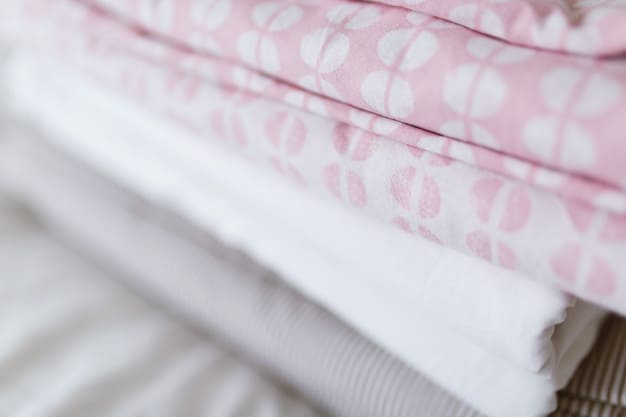- You are here:
- Home »
- Organic Bedding »
- How to Wash Mattress Protector?
How to Wash Mattress Protector?
Disclaimer: As an Amazon Associate I earn from qualifying purchases.
In this article, you´ll find out how to wash a mattress protector. Follow the tips to ensure your mattress protector stays in great shape for years to come. Find out what kind of detergent is the best non-toxic option to wash your organic mattress protector.
Tips to Wash Your Mattress Protector:
If you have a conventional mattress protector, you should check the label to be sure it’s machine-washable. Most of them are, but the label may indicate any specific care instructions, so double-check anyway.
You should avoid dry cleaning the mattress protector because the heat could melt the water-resistant material. Here are the general steps for washing your conventional mattress protector:
- Set your washing machine on a gentle or delicate cycle.
- The water should be cold or lukewarm. Any overly hot water may damage the waterproof material.
- No bleach or chlorine, just a mild laundry detergent will be sufficient for cleaning.
- Be sure to check that the mattress protector was thoroughly rinsed as any leftover buildup from the detergent may cause mold or mildew.
- For drying, you can either air dry it or tumble dry. The tumble dryer must be on a low heat setting to avoid any melting.
- Also, try to dry the mattress protector with similar fabrics.
If you have chosen an organic mattress protector these are the steps for cleaning it, although they are very similar:
- Like with the conventional mattress protector, you need to use a gentle, cold cycle on your washing machine.
- Avoid dry cleaning not only for the heat but also so it’s not exposed to harmful toxins.
- The washing machine may be set to hot water only if you’re washing to rid the mattress protector of mold. Hot water will cleanse and rid the organic mattress protector of mold far better than cold water could. But this is a last resort if you find that there has been a buildup of mold. Natural fabrics are more prone to mold and mildew than conventional fabrics so it’s something to watch out for if you don’t wash the sheets regularly and if you live in a humid area.
- Use an eco-friendly, non-toxic detergent. This is gentle on the mattress protector materials, the environment, and your skin. You can also use your eco-friendly detergent to pretreat the mattress protector for stains. In the next section, you can read more about a great natural detergent below.
- Tumble dry or air dry. Just as always, avoid high heat exposure in the tumble dryer so it doesn’t damage the material.
- Make sure that the mattress protector is fully dry before putting it back on your bed. Shake it out and be sure it’s thoroughly dry to avoid the mold or mildew buildup that natural fabrics are more prone to.

What Detergent Should I Use?
Any certified eco-friendly, nontoxic, or natural laundry detergent will work. We recommend Tru Earth Detergents. They are convenient laundry detergent strips that come in zero-waste packaging and are paraben and phosphate-free. Tru Earth Detergent is also free from bleach or added dyes. They are a vegan, natural choice to take the best care of yourself and your mattress protector.
This depends on the reason for washing. If your mattress protector is only used occasionally, for instance, in a guest bedroom, then you can simply wash it after each use. However, if your guest room is left unused for long periods of time, you should wash the bedding, including the mattress protector, every three months to get rid of dust.
If you suffer from allergies, you should wash it with your other bedding every 2-4 weeks to dispose of dust mites, allergens, and any dander that might irritate your sinuses and allergies.
If you spilled any liquids or it somehow was stained, you should wash it immediately after each occasion of coming in contact with fluids. You can count on washing it with every change of your linen to be sure you keep all dust at bay and control any moisture that might be trapped.
The more water-resistant the mattress protector is, the more you may need to monitor the moisture buildup, especially if you live in a damp area with stagnant air. And finally, experts recommend replacing your mattress protector completely every 1-2 years.
Read More: Best Tips to Wash Your Wool Blanket
What Does a Mattress Protector Do?
- Protect your mattress from allergens. This is very important if you have pets, if you suffer from allergies, or have sensitive skin. Dust mites and allergens, in general, can be kept at bay with the help of a mattress protector.
- Protect your mattress from you. Let’s face it. Accidents happen. People drool and sweat and little ones may struggle with potty training. A mattress protector can keep your mattress safe from all of that.
- If you eat or drink in bed, a mattress protector can prevent stains and keep food particles from finding their way to your mattress to grow. Overall it’s just hygienic to keep it away from contact with your mattress.
- No more bed bugs. Mattress protectors can allow you to make sure you “don’t let the bed bugs bite.”
- Add some softness. You can choose a mattress protector that adds not only a layer of protection but also a layer of extra cushion to your mattress. It’s a two birds, one stone sort of situation.
- You don’t have to keep spot-treating. If you don’t have a mattress protector, you can attempt to clean your mattress through spot treatment. But it’s time-consuming, annoying, and usually less effective than just preventing the accidental contact of a fluid with the mattress in the first place.
- It protects your investment. If you have invested in a great mattress, a mattress protector can allow you to hang onto that warranty and extend the lifespan of your mattress.
- It gives you peace of mind. Last but not least, a mattress protector can be a way to gain peace of mind knowing your mattress is protected from any accidents. Kids, pets, a quick drink in bed – it can all lead to a significant decrease in the lifespan of your mattress. An organic mattress protector can save you a lot of trouble, time, and money.

Conclusion
We hope our tips will help you know exactly how to wash your mattress protector to keep it in tip-top shape. If you’ve already got an organic mattress protector, consider investing in organic bedding, organic mattress topper and natural wool comforter for a truly chemical-free bed.
Read More: How to Wash a Body Pillow?
About the Author Kamila Flieger
My name is Kamila, and I'm passionate about researching non-toxic, organic products for the home. I believe it's so important to create a safe and healthy environment for our families, and I enjoy helping others do the same.

